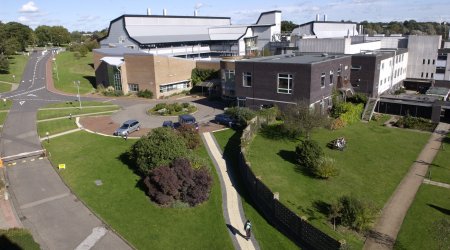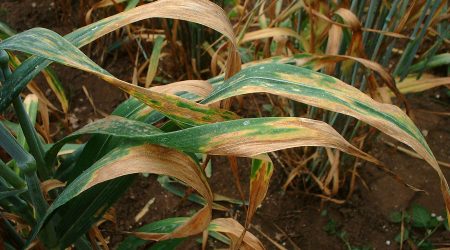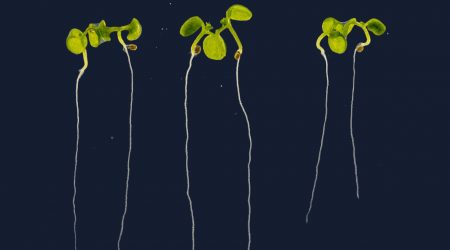Plants stay healthy by fighting off the bad and buddying up with the good
By forming close relationships with other organisms plants gain a competitive advantage; for many this is essential for survival. These relationships between organisms are called symbioses and can act as a ‘natural fertiliser for plants’.
Inside their roots, plants sense and signal that these bacteria are friends rather than foe. Understanding the signalling inside the plant cell at this crucial moment is one of the areas that Dr Myriam Charpentier’s research group investigates.
Dr Charpentier explains, “I became fascinated by two observations: that plant nuclei could possess their own calcium autonomy; and nuclear calcium signals were required for a very dynamic and beneficial process, plant symbiotic interactions. Due to our lack of knowledge of this complex process, I wanted to contribute to fill this gap and thus to understand how soil microorganisms can activate plant nuclear calcium signals in order to establish beneficial interactions.”
The role nuclear calcium plays inside cells is the main topic for research in Dr Charpentier’s group. Calcium is a universal molecular signal in all organisms, crucial to cellular life.
Calcium has been well studied in animals. It regulates a range of processes from gene expression through to memory formation. In plants, it has been implicated in the signalling of mechanical and abiotic stresses, in responding to hormonal stimuli and in the defence against disease-causing microbes.
But the precise mechanism of nuclear calcium signalling inside plants is a relatively unexplored field.
– Dr Myriam Charpentier
Dr Charpentier was the first to discover ion channels, such as cyclic nucleotide-gated channel 15 (CNGC15), located at the membrane of the nucleus which are responsible for the signal of calcium being released in plants. These channel proteins, responsible for oscillations of calcium observed during symbiosis, are essential to form symbioses.
This work, along with other studies, suggests the import role of the nucleus in generating calcium signals. Dr Charpentier received a BBSRC David Phillips Fellowship to establish her independent research group to investigate further. Nuclear calcium machinery is conserved across all land plants, including non-symbiotic species. Using model systems such as Barrel Clover (Medicago truncatula) and Arabidopsis thaliana the Charpentier lab is exploring how this nuclear calcium machinery has evolved and functions across land plants.
Dr Charpentier aims to discover what information nuclear calcium releases encode and how this information influences cellular reprogramming. A major aim for future research is to identify what triggers the initial release of calcium from the nucleus and how these are transduced inside and across cells.
The team are making an exciting start to the emerging field of nuclear calcium signalling in plants but as Dr Charpentier reflects, “We have a lot to do to find rapid solutions to sustainable food demand. There won’t be only one answer to this big challenge, but our contribution could be beneficial.”






